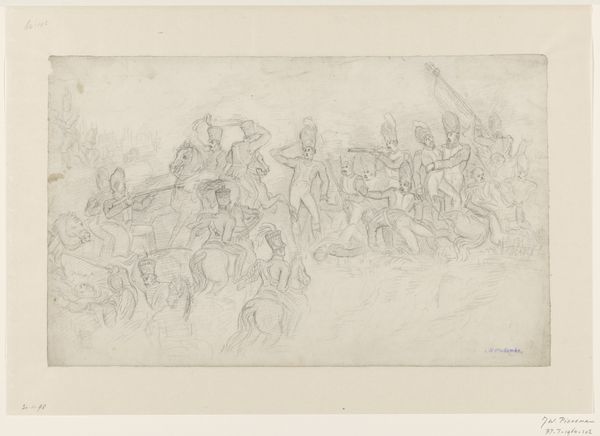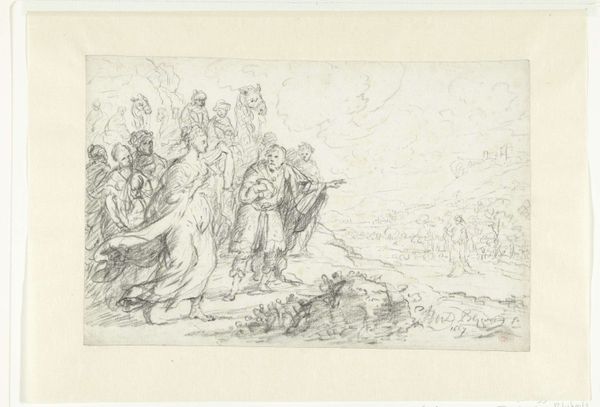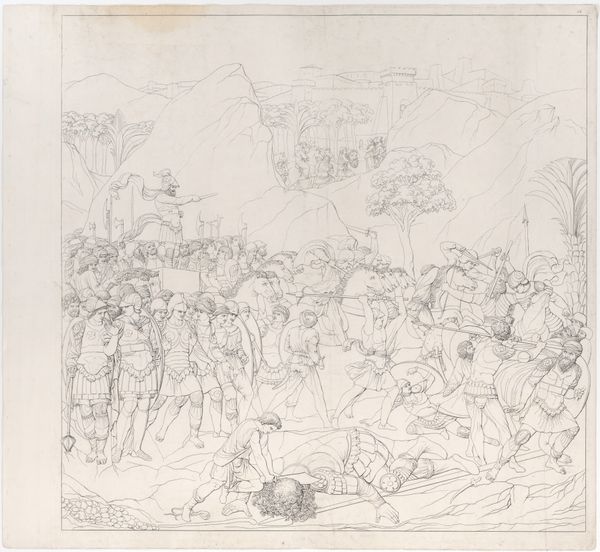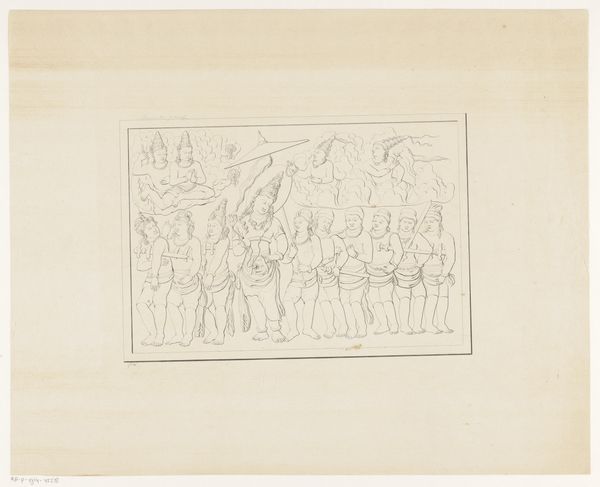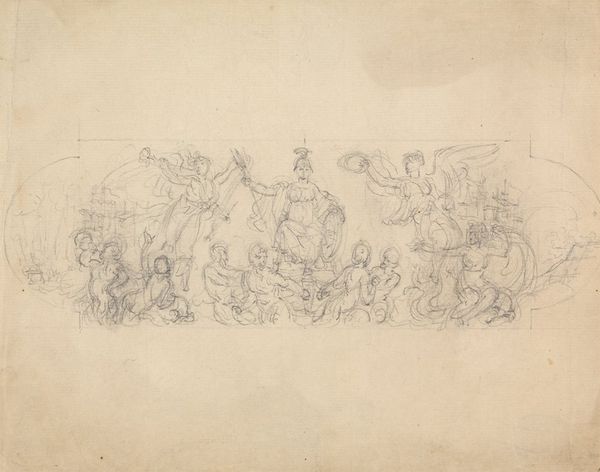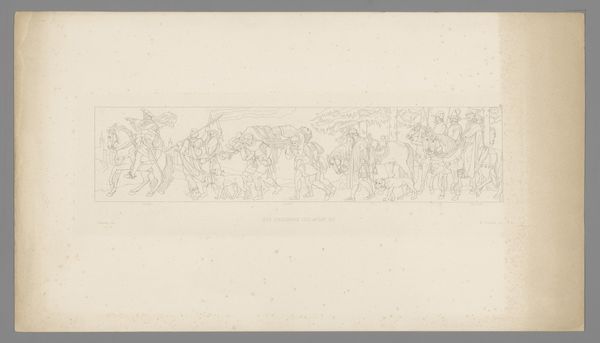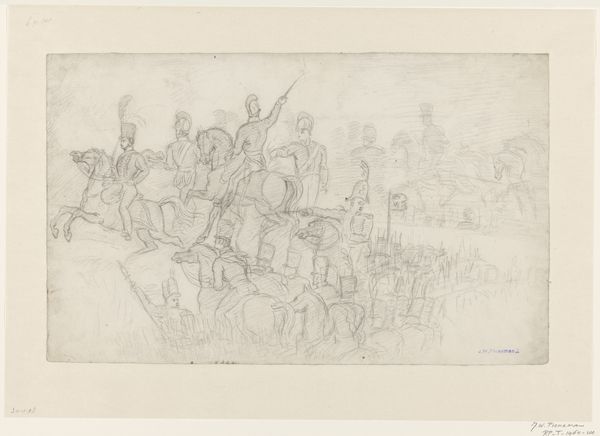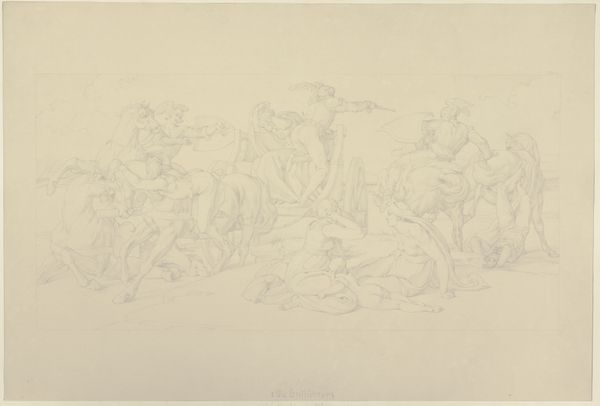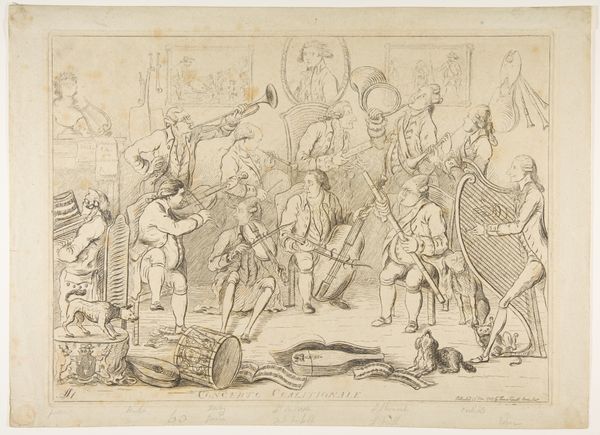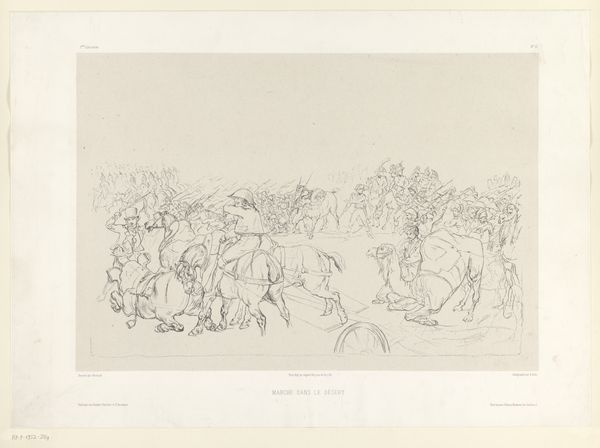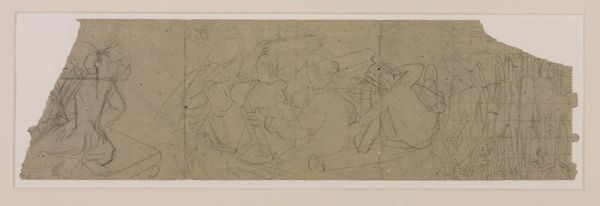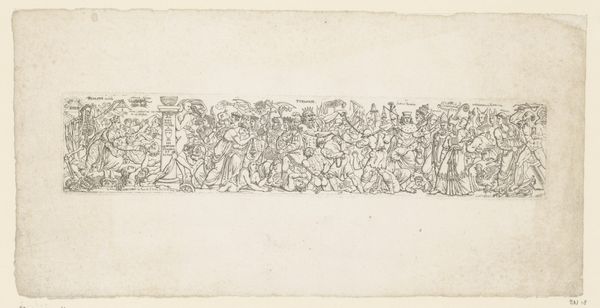
drawing, pencil
#
drawing
#
landscape
#
figuration
#
romanticism
#
pencil
#
history-painting
Dimensions: height 297 mm, width 480 mm
Copyright: Rijks Museum: Open Domain
This is a study in graphite on paper made by Jan Willem Pieneman in the 19th century. It shows a preliminary sketch for his painting of The Battle of Waterloo, depicting the Duke of Wellington receiving the Prince of Orange after defeating Napoleon. The final painting, which hangs in the same museum, was commissioned to commemorate the victory and promote national unity in the newly formed Kingdom of the Netherlands. But in this study, we can see Pieneman working out the composition and the placement of the figures, with a mass of soldiers, horses, and fallen bodies creating a sense of chaos and movement. The artist's intention was to capture the heroic moment of victory, but it also reminds us of the human cost of war. The study can reveal a lot about the artist's process and the political context in which he was working. By looking at sketches like this, as well as letters, newspaper accounts, and other historical sources, we can better understand the social and cultural forces that shaped the art of the time.
Comments
rijksmuseum about 2 years ago
⋮
Unfolding behind the foremost figures in The Battle of Waterloo are the horrors of the conflict. Pieneman worked up these scenes in great detail. Dead soldiers and horses are strewn over the battlefield. So many horses died at Waterloo that there was a serious shortage after the war. This scene appears on the left of the painting. The blank space is the captured flag held by an officer.
Join the conversation
Join millions of artists and users on Artera today and experience the ultimate creative platform.
